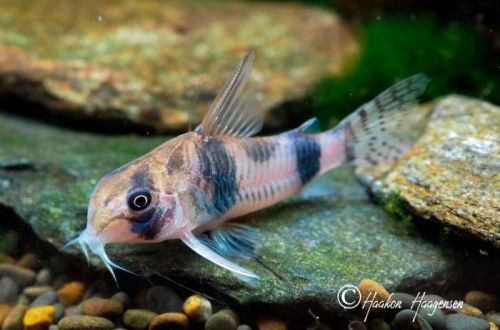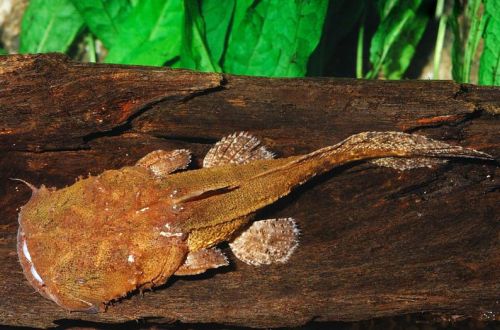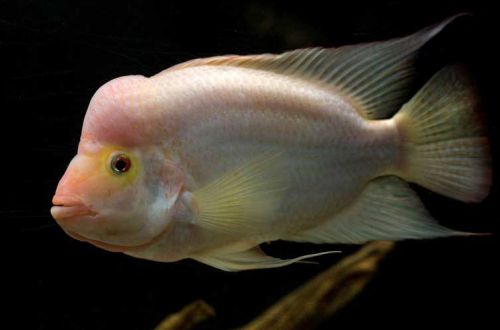
Asian Aravana
Aravana Asiatica, scientific name Scleropages formosus, belongs to the family Osteoglossidae (Aravanaceae). The name is largely collective and is often used in relation to all Aravans found in Asia. Although in reality, scientists distinguish at least four independent species, as well as many subspecies and geographical forms.

Fish is of particular cultural importance in Asia, in particular in China, and in a number of countries in Southeast Asia. The analogy with the Chinese dragon, as a symbol of well-being, predetermined high demand, which certainly affected the cost.
Aravana Asian is considered one of the most expensive fish. Active fishing has brought it to the brink of extinction. Since 2006, the species has been included in the Red Book and is protected by law. Catching and international export of wild individuals is prohibited.
For aquaristic purposes, there are more specialized fish farms included in CITES. Each fish grown in them has its own unique identifier, certificate of authenticity and birth certificate. Recently, all data is gradually being transferred to electronic form. Each sold fish is implanted with a microchip that carries all the necessary information.
However, there is also an illegal market with many nurseries, shadow exporters, auctions and points of sale. For more on this, see Simon Worrall’s interview with Emily Voigt, published in National Geographic.
Contents
Habitat
If we take into account geographical forms, then the natural habitat extends throughout Southeast Asia, including the archipelagos of Malaysia and Indonesia. In nature, it inhabits stagnant swampy reservoirs, backwaters of rivers. Prefers shady areas near the coastline, flooded rainforest.
Description
Adults reach a length of up to 90 cm. The fish has a long body with large pectoral fins. The dorsal and anal fins are shifted closer to the tail. Unlike the Silver Arowana from South America, the caudal fin is noticeably larger. Another characteristic feature is the size of the scales – each scale can be up to 2 cm in diameter!
The coloration is different and depends on the place of origin. The following color forms are distinguished: green, silver, red (the most valuable), golden.
Behavior and Compatibility
They live in the upper layers of the water. In the daytime, they prefer to hide under vegetation hanging over the surface of the water among flooded snags and roots. They are most active in the evening and at night when they go hunting.
Predatory and territorial species, competes with congeners for feeding areas. As a rule, they are kept alone, or in company with large bottom species or fish that live in the water column.
Brief information:
- The volume of the aquarium – from 1000 liters.
- Temperature – 24-30°C
- Value pH — 6.0–7.5
- Water hardness – soft to medium hard (2-15 dGH)
- Substrate type – any
- Lighting – subdued, moderate
- Brackish water – no
- Water movement – little or no
- The size of the fish is up to 90 cm.
- Nutrition – live food
- Temperament – territorial, aggressive
Maintenance and care, arrangement of the aquarium
Asian Aravana is not for the amateur. Those who have the opportunity to purchase this fish probably already have the appropriate knowledge about the peculiarities of caring for it and can afford to invite the necessary specialists. For this reason, within the framework of our site it will not be appropriate to describe in detail the nuances of the content, we will limit ourselves to brief information.
The optimal size for keeping one Asian Aravan starts at 1000 liters. Fish can jump out of the water, so the tanks are equipped with a lid. The design is simple, the main condition is to provide enough free space for swimming in the upper layer of water, as well as the placement of several large vertically oriented snags.
The comfortable environment is clean soft acidic water rich in tannins. The source of the latter is either special suspensions, additives to the filtration system, or natural decoration elements, such as the bark and leaves of some plants.
Food
Proper nutrition is key to long-term success. The basis of the diet is live foods such as shrimp, crickets, mealworms, forage fish, small amphibians, earthworms, insect larvae, etc. A combination of several foods is used in nurseries, including dry granulated foods.





